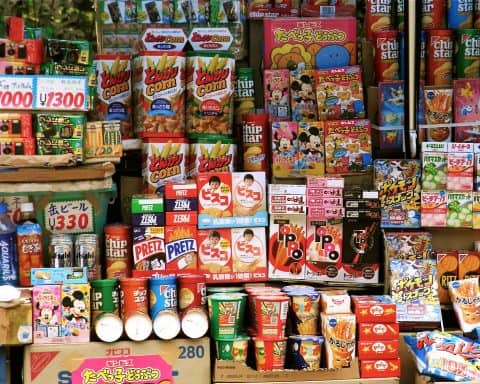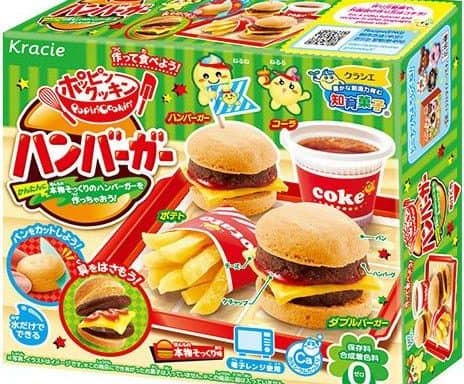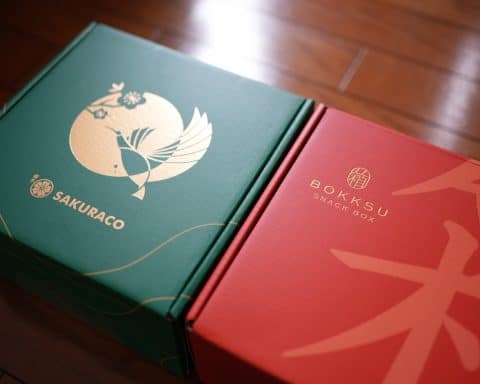I love fruit, and before I moved to Japan, I could satisfy that craving fairly easily.
Unfortunately, every time I go searching for fruit at Japanese supermarkets I’m reminded that Japan is definitely a more… ‘spendy’ country than other places in the world. At least for some things anyway.
However, after a bit of research, I’ve found out that my Japanese supermarket fruit is nothing when compared to some of Japan’s rarest and most highly prized fruit in terms of price. Today we’re going to talk about what makes Japanese fruit so dam expensive and why they’re unlike anywhere else in the world.
This is definitely one of the more crazy facts on the 63 mad facts about Japan blog post that I wrote about a while ago. Having said that, most of them are pretty mad, so if you enjoy this article then you’ll definitely enjoy that one!
Anyway, let’s talk about ridiculously expensive fruit!
What makes Japanese fruit so different?
In Japan, it’s extremely common to give gourmet fruit as gifts rather than simply to eat. To this effect, Japanese fruit tends to command a higher price and increase competition for the most desirable fruit year after year.
When I say they command higher prices, I don’t mean a few dollars more. I mean a few thousand more. Be prepared to be absolutely stunned by the cost of Japanese fruit!
Here is a quick look at the most expensive fruits in Japan and where they come from.
| Japanese Fruit | Origin | Yen | Dollars |
| Yubari King Melon | Yūbari, Hokkaido | ¥2,456,381 | $22,500 |
| Ruby Roman Grapes | Ishikawa Prefecture, Japan | ¥1,200,897 | $11,000 (a bunch of 24) |
| Egg of the Sun Mango | Miyazaki Prefecture, Japan | ¥403,938 | $3,700 |
| Square Watermelon | Ginza, Tokyo | ¥10,917 | $100 |
| Sekai Ichi Apple | Morioka, Japan | ¥2,183 | $20 |
| White Jewel Strawberry | Saga Prefecture, Japan | ¥1,091 | $10 (each) |
Why is fruit so expensive in Japan?
Fussy Shoppers – Many Japanese people have become accustomed to only the best fruit. This means shoppers are unlikely to purchase anything that doesn’t look perfect and tastes even better.
Of course, this is a rather sweeping statement, and whilst it’s true that not all consumers in Japan feel this way, it’s still a big problem that undoubtedly leads to waste and therefore expensive fruit.
Small farms – So we know that only the best fruit will cut it in the eyes of the consumer, but how is the farmer to deal with that? According to Japan Today, only 12% of the land in Japan is used for growing crops and even then most of it goes to rice.
They go on to explain that ‘the average size of a Japanese farm is just 1.9 hectares compared with 198 hectares in the US’. So if the farmers have less land, they need to make more money with each crop than in other countries.
Couple that with only selling the most pristine examples of each fruit to the supermarkets (because of the fuss) and you’ve got a recipe for extortionate prices.
Great care – Japan is a country known for taking extreme amounts of care in literally everything it does, and that’s no different when it comes to fruit. Whilst we understand consumers only want the best products, the blame for expensive fruit doesn’t entirely lie with them.
About halfway through this video, you’ll see just how much care and attention the individual buying the fruit is given. First, they’re asked to sit down whilst their fruit is chosen, then offered a drink, and finally get to watch as their fruit is carefully wrapped up for them as a gift.
When was the last time your supermarket did that?!
So, let’s take a look at 6 of the most expensive fruits for sale in Japan.
6. Japan’s White Strawberry
Cost: $10 (¥1,080) Each
Do you love strawberries?
Me too!
But even I might struggle to pay $10 for a single one…
‘Shirou Houseki’ or the ‘White Jewel’ are names given to a rare strawberry grown only in Saga prefecture by single grower Tejima-San.
Tejima-San cross breeds different varieties to produce the white jewel, and even then only 10% of the strawberries stay white once exposed to sunlight.
This intricate and complicated process is the reason each strawberry is so expensive.
And look at the video above, they’re absolutely huge!
These white strawberries are intended as luxury Japanese gifts rather than daily snacks.
Or if you’re just visiting the country for a couple of weeks you might as well treat yourself to some.
Holiday gift for yourself, right!? 😉 If not, grab a Tokyo Treat Box and enjoy Japanese food at home!
5. Sekai Ichi Apple
Cost: $20 (¥2,100)

Let me introduce you to the most expensive apple in the world. The Sekai Ichi.
Literally translated ‘World number one’, according to First We Feast these luxury Japanese apples are ‘Washed with honey and branded by hand to ensure they’re blemish free’.
And if that wasn’t enough, the apples are all hand pollinated to make so each fruit reaches its full potential. This is actually a practice fairly common in Japan’s fruit-loving society, and one that doesn’t really surprise me.
Whilst it’s said that the Sekai Ichi apple isn’t the crispiest or crunchiest in the world, they’re certainly the best-looking and most highly cared-for apples around.
Just for a bit of comparison, here are some apples I found at my local supermarket.

They’re big no doubt, but they certainly don’t cost ¥2,100 each!
4. Square Watermelons
Cost: $65 – $1000 (¥7,071 -¥108,791)
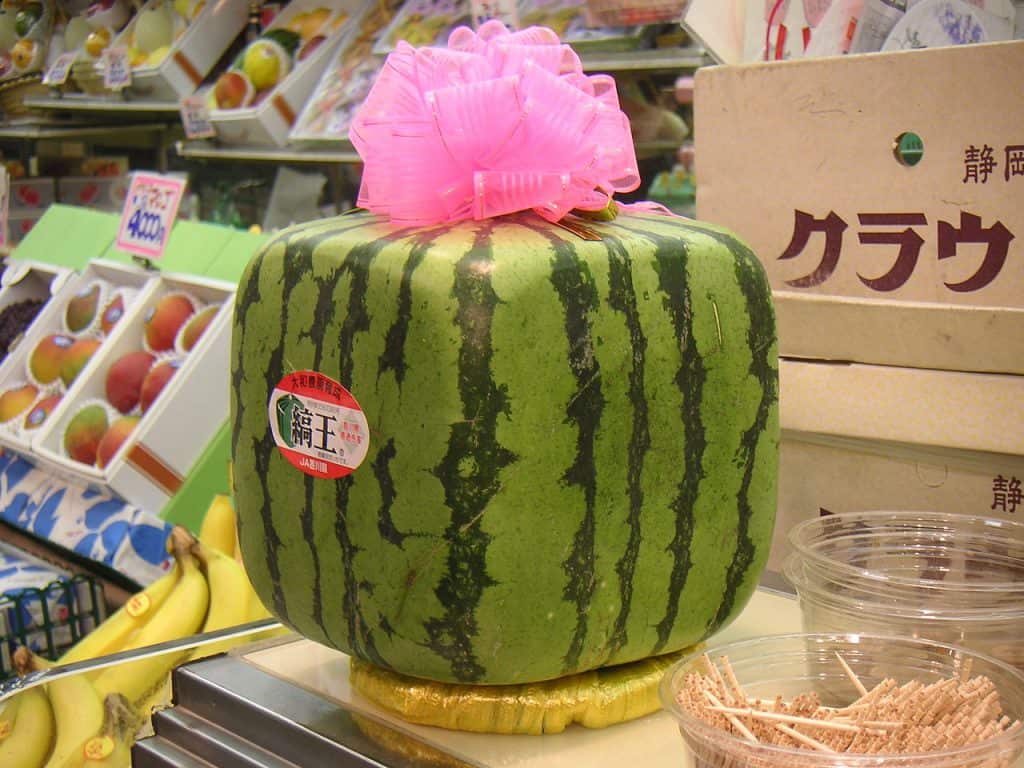
Probably the most famous of all Japanese fruits is the square watermelon.
So, why are the watermelons square in Japan?
It turns out the original reason they were grown this way was to fit into compact fridges and to be cut with ease without rolling.
Their inventor, graphic designer Tomoyuki Ono, originally came up with the idea in 1978 and later even applied for a patent in the United States (and received it).
Due to their extortionate prices, the melons are now mainly ornamental rather than practical.
A typical Japanese square watermelon will cost around ¥10,000 ($65), but that’s nowhere near the top prices they go for.
In 2013 its reported someone from Russia paid up to $1000 for a single watermelon.
Not only does Japan cube some of its watermelons but they also sell Explosion watermelons, calabash-shaped watermelons, human-faced watermelons, heart-shaped watermelons, and pyramid watermelons.
It’s pretty clear that if you love melon, Japan is the place to be!
3. Taiyo No Tamago – Egg of the sun mango
Cost: Up to $2,000 (¥218,299)
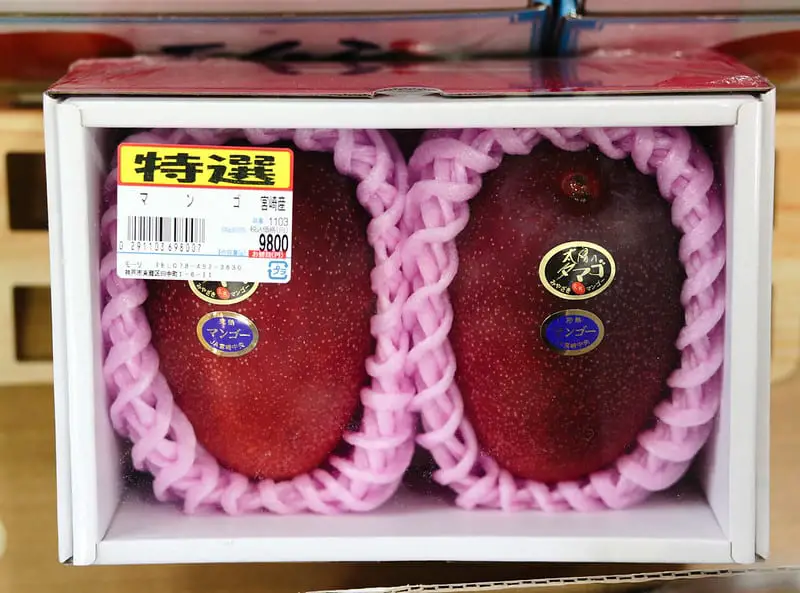
Mangos for $2,000? Really??
Well apparently so!
In 2017, two mangoes from Miyazaki in western Japan were sold for an astronomical $3,600 each. EACH.
According to official reports, the man who placed the bid wanted to ‘Uphold the value of the Egg of the sun’ and promote his home prefecture of Miyazaki.
What does it take to be an Egg of the sun?
To have a mango qualify as an egg of the sun, it must weigh at least 350 grams, have high sugar content, and have a beautiful deep red color.
Does this make the fruits tastier?
Honestly, I have absolutely no idea, and I doubt I ever will.
But one thing I do know is that it absolutely makes it more expensive!
2. Ruby Roman Grapes
Cost: $11,000 (a bunch of 24) (¥1,200,897)
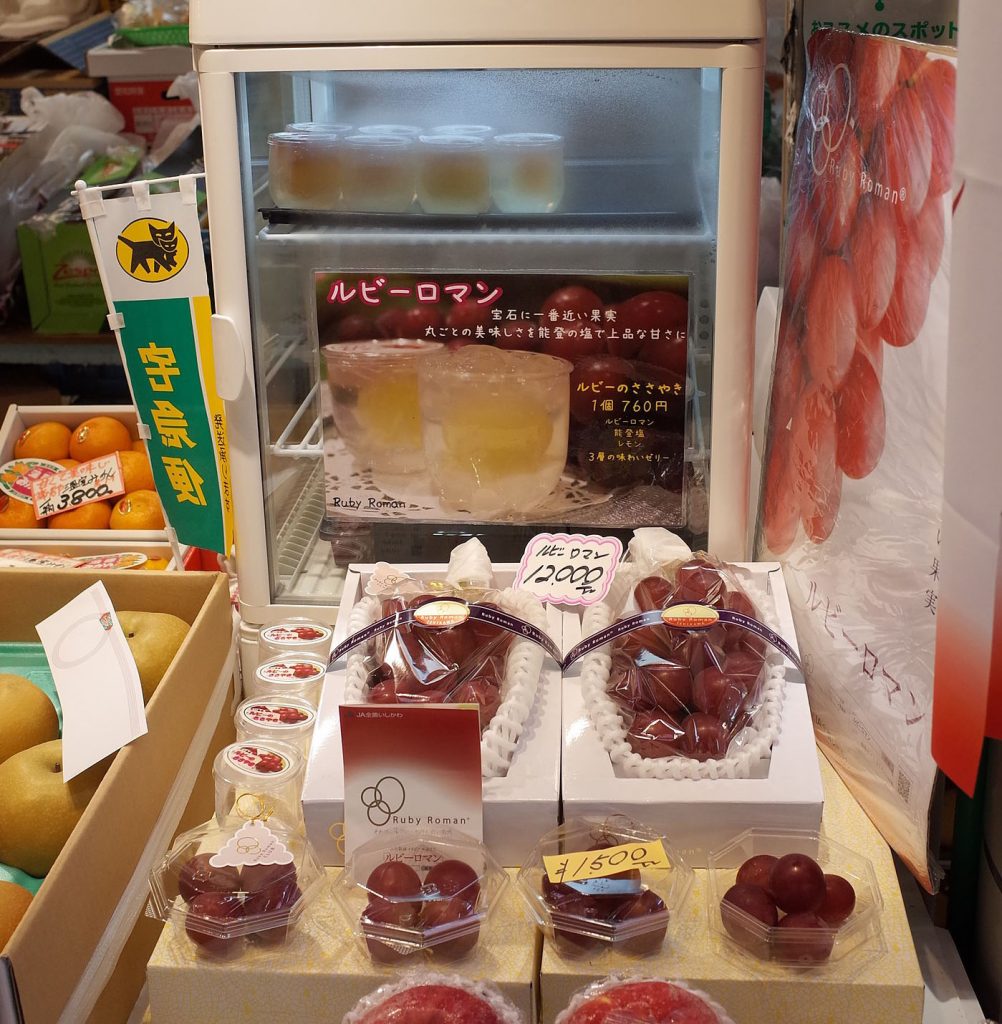
I absolutely love grapes, especially red grapes but not quite enough to drop $11,000 dollars on a bunch of 24.
In England, the average amount for a punnet of grapes is at most £2 ($2.82) and I’d happily wager it was a similar price in the United States too.
And in Japan?
According to Rakuten, a Japanese marketplace, the cheapest price of grapes is ¥600 ($5.49) and even then they’re frozen. If you’re looking for the cheapest unfrozen grapes on Rakuten it’ll set you back ¥1,800 ($16.47)
This price is bound to be reflected in convenience stores, too.
Although you might be panicking at the idea of spending that much on grapes, let me tell you now that Japan does not have normal grapes.
Think of these like a dessert or a meal to be appreciated separately, not just a snack.
Take a look at the picture above and you’ll see what looks like purple tomatoes or plums.
Yeah, that’s the grape.
These ping-pong-sized balls of glory are the Ruby Roman variety. That means you can expect to pay around $15 for 5 of them.
So when you realize they’re actually $3 each and take more than one bite to finish, is it really that expensive?
I mean sure it’s not cheap but no one is taking my grapes from me!!
1. Yubari King Melon – The most expensive fruit ever sold.
Cost: $22,500 (¥2,456,381)
Let me introduce you to the most expensive fruit in Japan, the Yūbari King Melon.
Originating from Yūbari in Hokkaido, these melons set the record for the most expensive fruit ever sold.
In 2019, 2 of these cantaloupe Kings were sold at auction for a staggering $45,000 by Tokyo-based Pokko Sapporo Food & Beverage Limited.
What makes the Yubari King Melon so expensive?
Yubari King Melons must be perfectly round, have no scars, and be cut from the first harvest.
These melons are also a hybrid of two other cantaloupes; Earl’s Favorite and Burpee’s Spicy.
Another factor that gives this fruit such a high price is its location of production. Similar to Kobe Beef and the White Jewel strawberry, the Yubari King melon is only produced in Hokkaido
Once again like many of the other fruits on this list, the Yubari is normally purchased as a gift rather than for daily eating.
Picture this: You’re sitting in your living room, scrolling through photos of Japan, dreaming of the day when you can finally experience the culture, the sights, and most importantly, the food. As your stomach growls, you remember reading about Japan’s famously expensive fruits, like the $22,500 melon.
While you might not be willing to spend your entire savings on one piece of fruit, I have good news for you. There’s a way to enjoy the flavors of Japan without breaking the bank or leaving your home. Have you heard of Tokyo Treat? It’s a monthly subscription box filled with all sorts of Japanese snacks and goodies, delivered straight to your door. It’s like a little taste of Japan that you can experience from the comfort of your own home, and I flipping love it!





